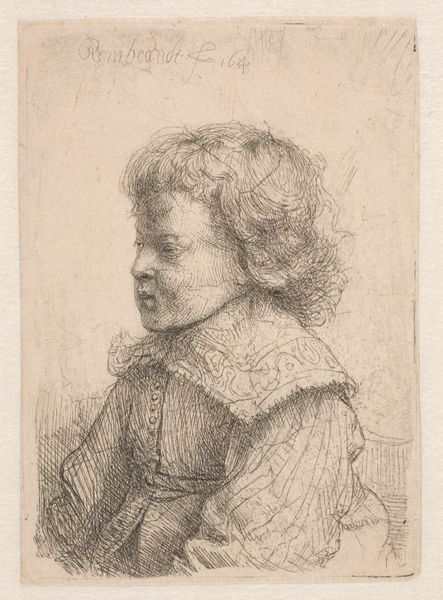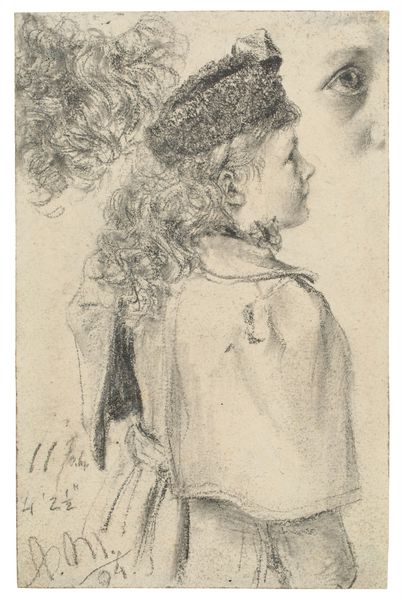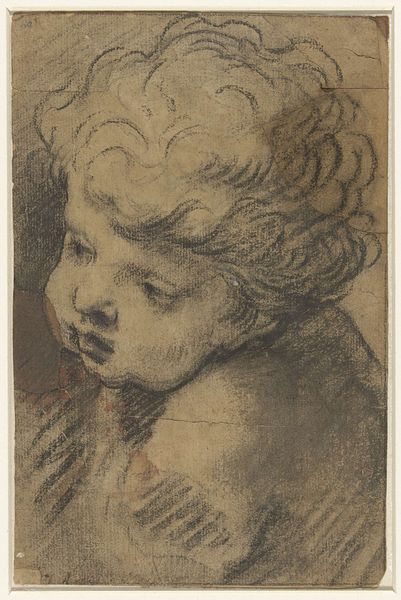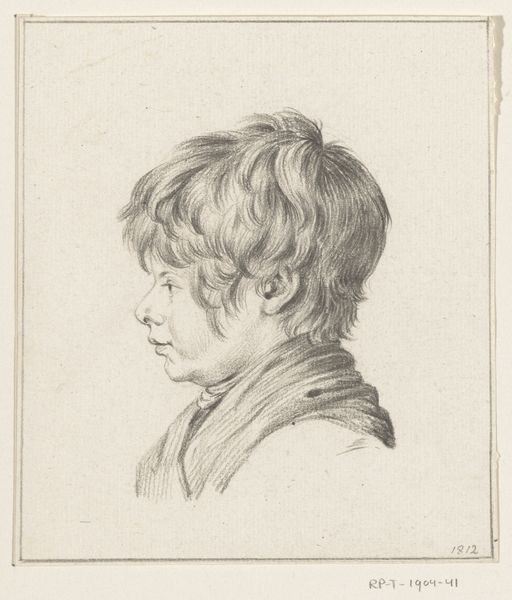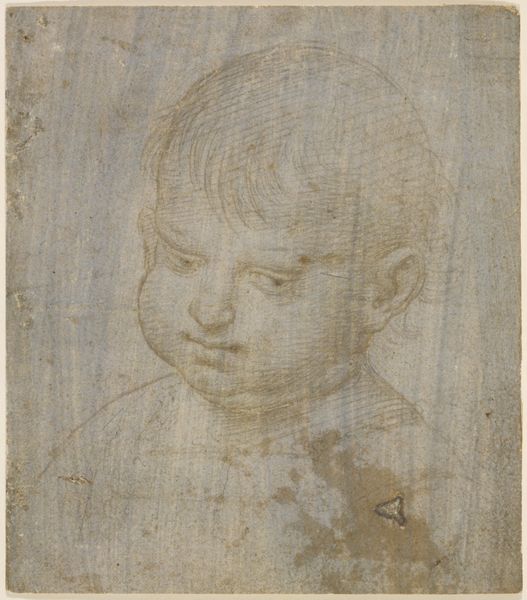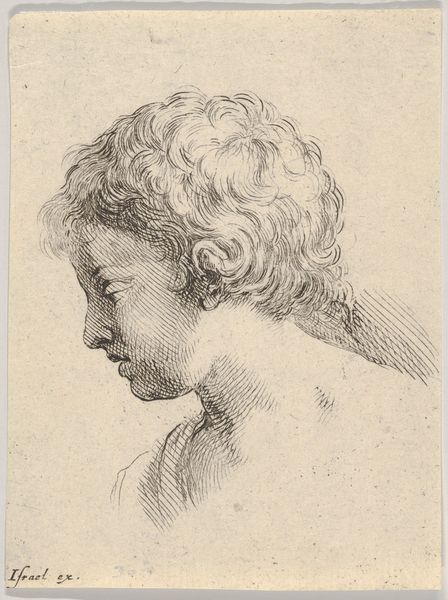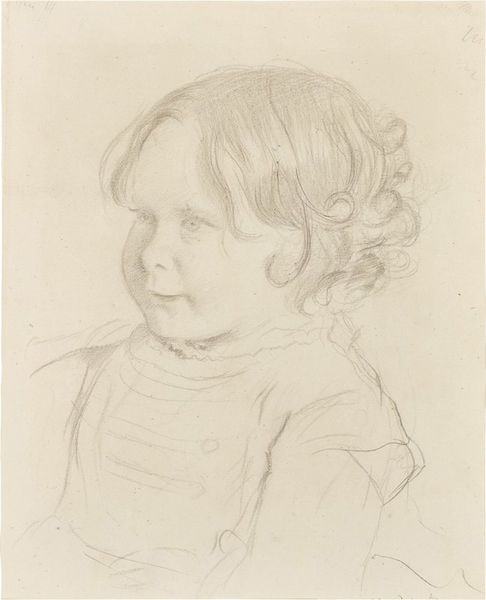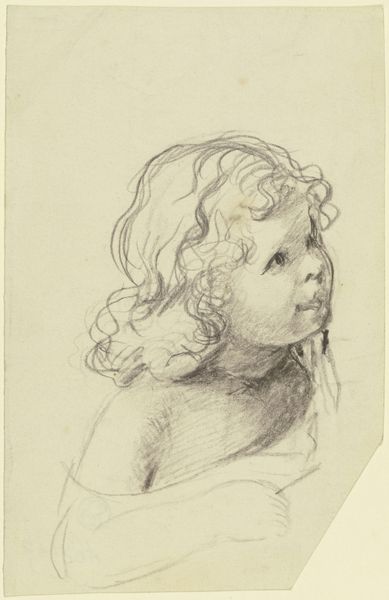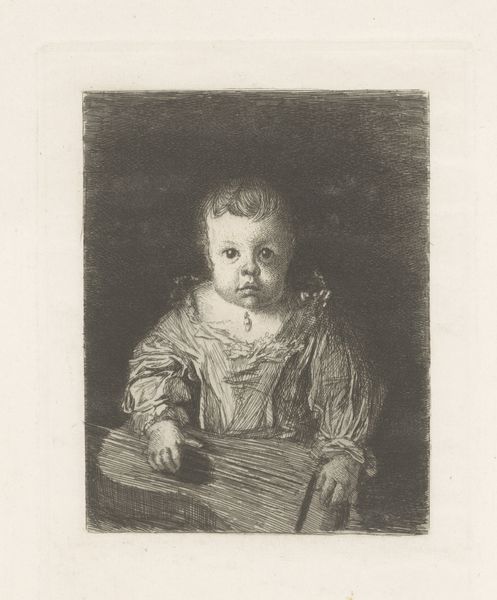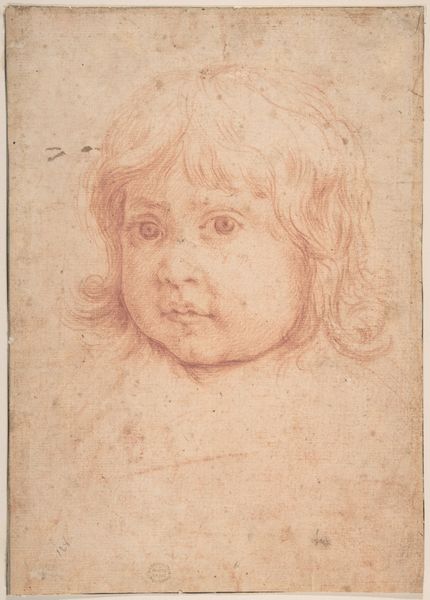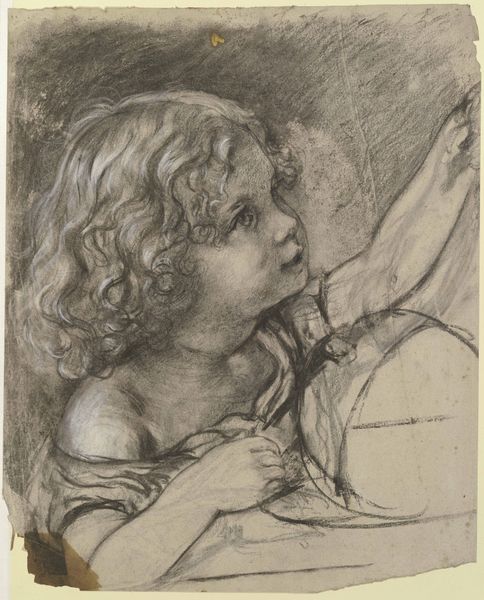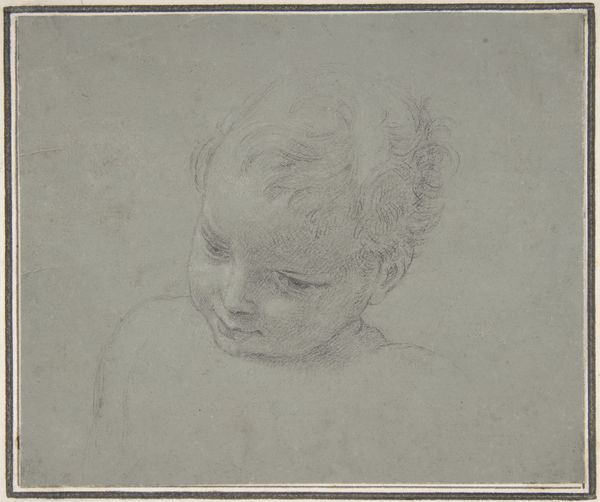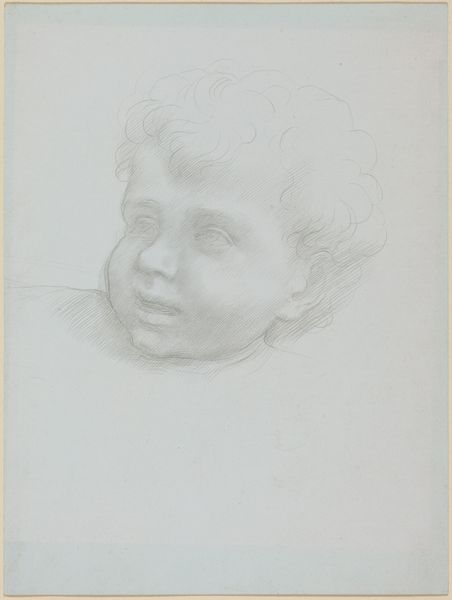
print, etching
#
portrait
#
baroque
#
dutch-golden-age
# print
#
etching
#
charcoal drawing
#
figuration
#
line
#
history-painting
#
academic-art
Dimensions: height 95 mm, width 67 mm
Copyright: Rijks Museum: Open Domain
Curator: Before us, we have Rembrandt van Rijn’s "Portrait of a Boy," created in 1641. The piece is an etching, currently residing at the Rijksmuseum. Editor: The immediate impression is one of fragility. The fine lines suggest a certain delicacy, almost as if the boy himself might disappear if you look at him too closely. Curator: Indeed, Rembrandt's skill in etching allows him to capture not only likeness but also texture. Look at the boy's elaborate collar. We can clearly see the patterns worked into the linen and imagine its production within the social context of 17th-century Dutch craftsmanship. Editor: And the light catches the collar in a way that draws attention to his social standing, but his downcast gaze contradicts any sense of arrogance. It makes me wonder about the symbolic weight a portrait like this would carry for the family. Perhaps it was intended to communicate a hope for the future or memorialize a fleeting moment. Curator: We also see evidence of artistic labor; note the very clear etched signature "Rembrandt f. 1641" on the top right of this print; that specific "f." of "fecit" gives the mark of an accomplished artisan that declares to the public "Rembrandt made it". Also consider how this was produced. Multiple impressions could be made. These prints made artwork more accessible to a broader segment of the populace. How did such reproduction change art’s consumption and reception? Editor: It’s fascinating to consider this work through a symbolic lens as well, especially the symbolism of youth. It serves as a reminder of vulnerability and potential and carries an implied narrative burden. Children represent lineage and are also emblems of what a family hopes for. There is almost a universal story attached to the symbolism of the child. Curator: I'd push back and ask, is it always useful to seek universality, or is it more useful to consider the specificity of context? While images certainly convey broader meanings, they’re created within specific material and socioeconomic conditions. It may not be about an overarching idea but about localized systems of artisanal knowledge and material production. Editor: Perhaps both viewpoints complement each other. We see the cultural memory embedded in symbols and acknowledge that Rembrandt, an active participant within this social landscape, knowingly uses established signs for emotive effects. It serves, as all things must, several roles within its time, and perhaps outside its time as well. Curator: In essence, this small print encapsulates much about the artist and society. Reflecting on labor and its intersection with iconography gives a richer, layered perspective. Editor: Indeed, by acknowledging all levels of complexity that exist within art, one understands that both form and matter tell a history.
Comments
rijksmuseum about 2 years ago
⋮
The identity of this boy remains unclear for the moment, proving that we still do not know everything about Rembrandt’s life. He lavished great attention on the modelling and illumination of the sitter’s face. He encountered some problems, however, in the process of etching it. The etching ground was porous and cracked, resulting in many grey areas: the cracks are mainly visible in the hair.
Join the conversation
Join millions of artists and users on Artera today and experience the ultimate creative platform.
